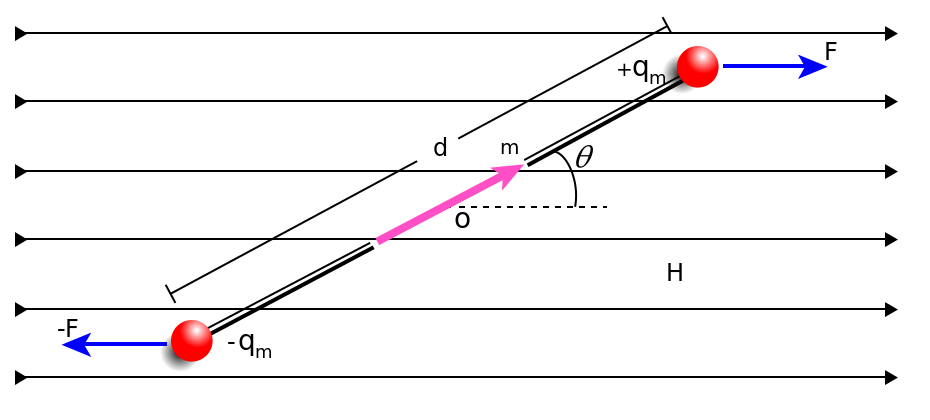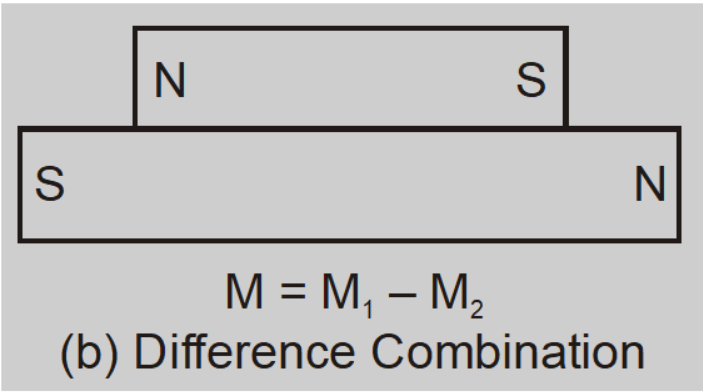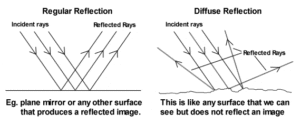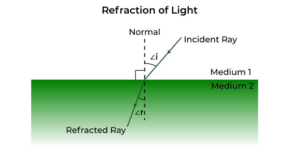In this article, we are going to discuss vibration magnetometer class 12, so let’s get started…
What is vibration magnetometer?
Definition: A vibration magnetometer is an instrument used to compare the magnetic moment of two bar magnets, and to compare the horizontal components of the earth’s magnetic field at two different places and used for measuring the horizontal components of the earth’s magnetic field. [latexpage]
Vibration magnetometer working principle
This instrument works in the principle that – If a bar magnet is suspended freely in the uniform magnetic field. It tries to align itself in the field direction, so whenever it is displaced through a small angle θ in the horizontal plane and released, it experiences a restoring couple. This makes the bar magnet execute an (SHM) simple harmonic motion.
Vibration magnetometer diagram

The vibration magnetometer has a simple design. It contains a wooden block having two glass panels on the opposite side. It has two holes or slits at the top of the block to observe the oscillations.
A stirrup on which magnet is placed is suspended by a fine torsion less fiber from the above torsion head. The fiber is covered by the glass tube above the wooden block to prevent the thread from external touching or disturbance.
A plane mirror is inserted to the base below the suspended magnet to count the oscillations made by the magnet, without any parallax error.
Time period of oscillation of the bar magnet
When a bar magnet is suspended freely in a uniform magnetic field then it experiences a torque. Due to this it displaces from the horizontal plane by some small angle θ and starts executing simple harmonic motion about the mean position.
Suggested Reading:

The torque acting on the magnet is $$\tau=-m B_{H}(2 \ell \sin \theta)=- MB _{ H } \sin \theta$$ negative sign (- ve) shows that the torque is acting along the decreasing θ. If θ is small then $$\tau=- MB _{ H } \theta$$ If $\alpha$ is the angular acceleration and $I$ is the moment of inertia of the bar magnet about the axis of the suspension then torque can be as: $$\tau= I \alpha=- MB _{ H } \theta$$ Now, the time period of oscillation of bar magnet is given as: \begin{equation*}\begin{split}T &=2 \pi \sqrt{\frac{\text { Angular displacement }}{\text { Angular acceleration }}}\\&=2 \pi \sqrt{\frac{ I }{ MB _{ H }}}\end{split}\end{equation*}
Uses of vibration magnetometer
Vibration magnetometer is used for:
- Comparison of the magnetic moment of the magnet of the same size.
- Comparison of the magnetic moment of the magnet of the different size.
- Comparison of the horizontal components of the earth’s magnetic field at different places.
Suggested Reading:
Comparison of the magnetic moment of the magnet of the same size
Let there are two magnets having same mass and size. Let $M_1$ and $M_2$ are the magnetic moment of the magnets then the time period of oscillation of the each magnet is given as: $$T _{1}=2 \pi \sqrt{\frac{ I }{ M _{1} B _{ H }}}\; and\; T _{2}=2 \pi \sqrt{\frac{ I }{ M _{2} B _{ H }}}$$
So therefore $$\frac{T_{1}}{T_{2}}=\sqrt{\frac{M_{2}}{M_{1}}}\;and\; \frac{T_{1}^{2}}{T_{2}^{2}}=\frac{M_{2}}{M_{1}}=\frac{m_{2}}{m_{1}}$$
Comparison of the magnetic moment of the magnet of the different size
Let the both magnets have different moment of inertia $I_1$ and $I_2$ and magnetic moment $M_1$ and $M_2$ respectively.
In the case of sum combination of the magnetic moment

In this case time period of oscillation of bar magnet is given as: $$T _{1}=2 \pi \sqrt{\frac{ I _{1}+ I _{2}}{\left( M _{1}+ M _{2}\right) B _{ H }}}$$
In the case of difference combination of magnetic moment

In this case time period of oscillation of bar magnet is given as: $$ T _{2}=2 \pi \sqrt{\frac{ I _{1}+ I _{2}}{\left( M _{1}- M _{2}\right) B _{ H }}}$$
So $\frac{T_{1}}{T_{2}}=\sqrt{\frac{M_{1}-M_{2}}{M_{1}+M_{2}}}$ or $\frac{T_{1}^{2}}{T_{2}^{2}}=\frac{M_{1}-M_{2}}{M_{1}+M_{2}}$ or $\frac{M_{1}}{M_{2}}=\frac{T_{1}^{2}+T_{2}^{2}}{T_{2}^{2}-T_{1}^{2}}$ If we knew $T_1$ and $T_2$ then we can easily find $\frac{M_1}{M_2}$.
Comparison of the horizontal components of the earth’s magnetic field at different places
Let the two magnets having moment of inertia $I$ and magnetic moment $M$ is vibrated at different places having horizontal components of earth’s magnetic field is $B_H$ and ${B_H}’$. Then time period of oscillation is given at two different places is as follows: $$T =2 \pi \sqrt{\frac{ I }{ MB _{ H }}} \;\text{and}\;T ^{\prime}=2 \pi \sqrt{\frac{ I }{ MB _{ H }^{\prime}}}$$ So, $\frac{T^{\prime}}{T}=\sqrt{\frac{B_{H}}{B_{H}^{\prime}}}$ or $\frac{B_{H}}{B_{H}^{\prime}}=\frac{T^{\prime 2}}{T^{2}}$.
Watch this video for more reference.
Stay tuned with Laws Of Nature for more useful and interesting content.








